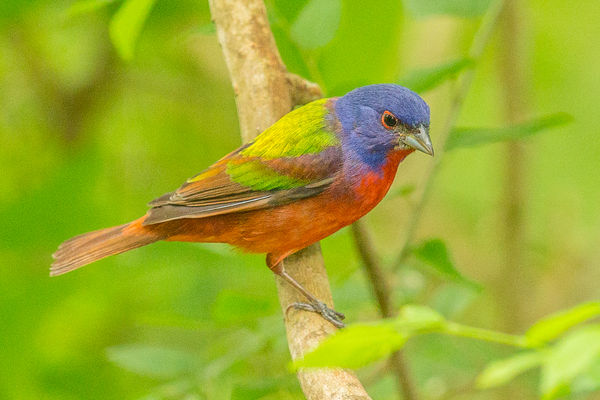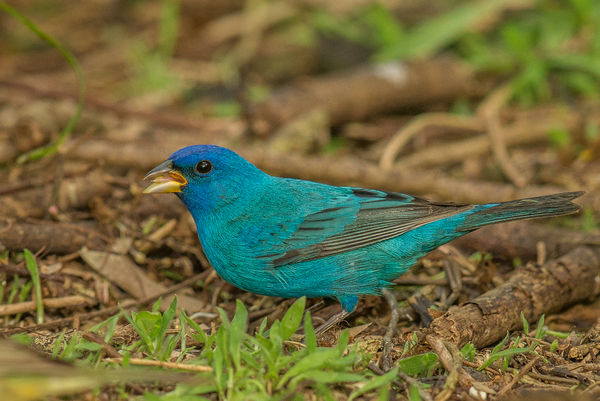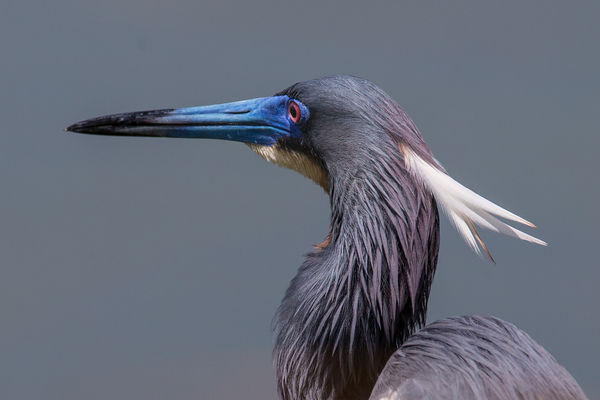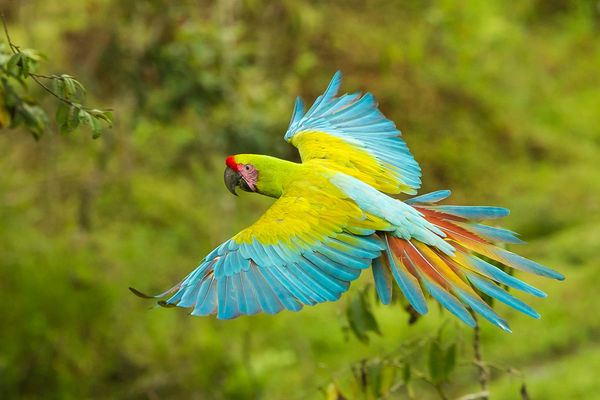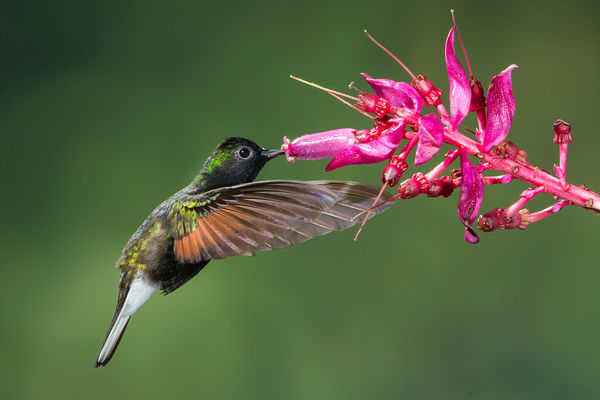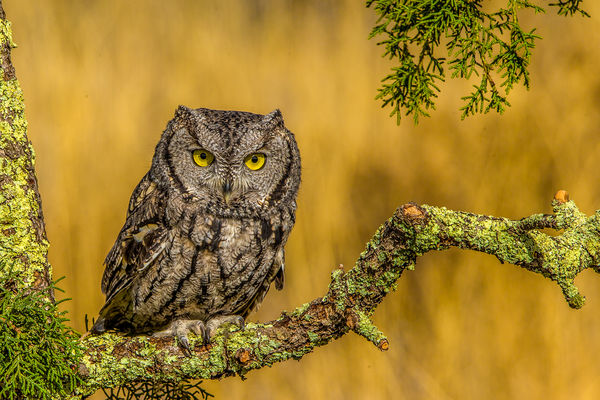Posts for: wotsmith
Jun 6, 2016 08:39:20 #
UXOEOD wrote:
Our fellow UHH'er, SharpShooter, said "Most nature shooters don't know anything about composition".
Okay fellow nature photographers, what do you say. Is Sharpshooter correct?
Okay fellow nature photographers, what do you say. Is Sharpshooter correct?
I am an avid wildlife/bird photographer. In my case it isn't that I don't know anything about composition, I am just not very good at it. I have often wondered if I did not choose wildlife/bird photography because I am good at the technical aspect of photography, but not gifted in composition. My wife is good at composition, so we make a team and have a great time. We'll spend this summer in the National parks of Utah, Colorado, & Wyoming. Maybe I'll get better with landscape.
Jun 3, 2016 10:25:40 #
Dds82 wrote:
I'm interested in buying a decent pair of binoculars for general use, birds, maybe star gazing etc.... I don't feel like spending time researching it like I do when buying camera equipment. Ready to spend up to $1000.
I see canon has IS incorporated in their binoculars. Is it as effective as with camera lenses?
Thank you all for your help.
I see canon has IS incorporated in their binoculars. Is it as effective as with camera lenses?
Thank you all for your help.
We bought a "pair" of 10X IS Canon binoculars about 6 years ago. Yes the IS is remarkable. without IS a 10X is wobbling all over the place in my hands, but rock stable when you push the IS button. Get'em
Jun 2, 2016 09:09:26 #
May 21, 2016 08:11:33 #
I was in the same place about a month ago. I called Adorama and bought a USED 24-70 f2.8 II at a reasonable price and it is like new. It is on the camera daily. Stick with the red band. my next body will be the Canon 5DSR and that lens will be a perfect match. All reports are the the 24-70 f2.8 version II is one of the best lenses from Canon.
Good Luck
Good Luck
May 20, 2016 12:36:51 #
charles tabb wrote:
I don't even pretend to be an expert photographer ... (show quote)
Amen Brother, I have never heard so much bitching about camera weight till I started looking at this website. I am 75 with70 Y/o wife, and we carry what we need to get the photographs we like. I did buy my wife the best fuji and a set of lenses because carrying a Canon 5Dmk3 "hurts my neck" the next comment was about the Fuji, "this does not focus fast enough", so sold the Fuji and now she is back to the 5Dmk3 usually with 24-105, but commonly the 300mm f2.8 and no more bitching. I carry a 1DX with a variety of lenses, none small, and I somehow get through the day. My problem was that I did not know I was supposed to complain about camera weight. We get the photos that we want, win some big contests, and plan the next photo op trip.
I wonder if the complaints come from people who read the specs and never actually carry stuff. I forgot to mention the back pack with at least 2 more lenses, lunch, etc. that we take turns carrying. Even with the 1DX and a 600mm f4.o the total weight is about 15 - 16 lbs; I bet a lot of women carry purses that weigh that much. My advise is try carrying what ever it takes to get the results that you want. My physician says if you start doing less and less, then suddenly that is the max you can do. I am old, overweight, and not in great shape, but I ain't quitting what I can do, even if that makes get tired and breath heavy. It is normal to be tired at the end of the day.
Apr 16, 2016 09:51:56 #
Amen, been using one for years
Apr 15, 2016 11:29:47 #
lrm wrote:
Any recommendations for a rolling bag for photo equipment that meets airlines 22x14x9 dimensions? I have been looking at Think Tank and Lowepro. It did not look like Pelican had such a size? Any others?
I have two biggest think tank roller bags and they have carried my stuff safely 50 plus flight a year, for several years. I do remove the lenses from the bodies as a (unnecessary???) precaution so that lens mounts can't get damaged.
Apr 15, 2016 11:19:50 #
Apr 15, 2016 10:57:20 #
DerBiermeister wrote:
I am specifically talking about capturing those fantastically sharp photos of zoomed-in birds (filling most of the image), that appear to be taken in wooded areas.
Assuming each shot took a fair amount of time to compose, and also probable use of a tripod -- how do you know the bird is going be on that specific branch at that time? My experience is that birds don't stay in one spot for more than a few seconds.
Assuming each shot took a fair amount of time to compose, and also probable use of a tripod -- how do you know the bird is going be on that specific branch at that time? My experience is that birds don't stay in one spot for more than a few seconds.
Hey DB,
well you have arrived at the dilemma I faced a few years ago. I kept looking at photos on Art Morris' website: birdsasart.com and wondering, how did he do that? I could not afford his workshops so I kept wondering. I did find a workshop in Costa Rica that I could afford with Greg Bosco, and later met him and Doug Brown in NM on an other workshop.
Here is what I learned. Most small bird photos are shot hand held, because they are just too quick, and even with a excellent tripod and the best gimboled head, I can't get it on target quick enough. I do use a tripod every chance I get, but it is way less than 50% of the time in bird photography and zero percent when shooting BIF. But there is hope! and in a environment that has a high bird density, setups can be great.
I ran into to Alan Murphy one day in NM and he had made some setups for raptors, and he let me shoot over his shoulder and I got some great shots. Alan has some videos on how to make setups that will bring birds to where you want them. So with a setup, you manually focus on a flower or perch, be on a tripod, maybe set up some flash and sit and wait for a bird to come. Check out his website for setup videos. Yes, you have to buy them.
In Costa Rica, when photographing hummingbirds, the density of birds was so great that I manually focused on a flower with the camera on a tripod and just shot when a bird was at the flower. There were so many birds, I shot about 750 frames per hour; trashed most, but I have a portfolio of winners.
I have the good fortune of having a wife who likes to travel and is a good photographer. So we travel a lot, mostly to photograph birds. We are currently in Mexico headed to Holbox island and we should get to see herons, flamingos, and other water birds. I try to find a "birder" at each location we visit, and learn about the local birds and where to find them. I do shoot prime telephotos, usually with flash and a better beamer to put a little light on the bird, but I try not to have a "flashed" look. Sometimes I shoot from a car with a beanbag on the window, but mostly walking and looking. If you can travel, find areas of high bird concentrations so it does not get boring. During migration there are a lot of places like that. If you can't afford to travel, find some birders and ask where to see good stuff. Gene51 who lives in NYC posted some fantastic Eagle photos, so I asked were in Alaska did you get that, Ha, he got them just a few miles out of NYC on the Hudson river. So... you don't have to go to crazy places to get good bird photography.
I got a lot of excellent photos on a trip to the coast of Texas (High Island) during migration. Prior to the trip I had hopes of a good photo of a painted Bunting. Finally I saw one for about 15 seconds. The shot is attached; but if I had tried to use a tripod I never would have made it. One last thing: shoot at the highest frame rate you camera body will go. For each of the posted photos, I probably shot 10-20 frames since the 1DX will shoot about 10/sec. That way you get choices in head and wing position and maybe some are in better focus than others. Head and wing position can make the difference between trash an a winner. Good luck and most of all shoot a lot of frames.
Apr 13, 2016 12:10:32 #
gschmitt wrote:
Anyone recommend a particular tripod that is lightweight enough to hike with??
I have a carbon fiber Mefoto that works well; about 3 lbs
Apr 13, 2016 11:43:43 #
countrycameraman wrote:
Please share tips on reducing or eliminating camer... (show quote)
When I first go a 600mm lens, I thought that all I had to do was to point it at something and get great photos - wrong. I had the same difficulty with focus, etc that you are expressing. Reading and attending a couple of workshops along with a great deal of practice in the back yard has changed that to now 90+% of my shots are crisp. What is the difference?
First of all the lens needs to be micro focused to your body. Some of my lenses have been spot on, but most need to be adjusted. After that the camera body remembers the setting. I was amazed to read that Art Morris (one of the very best bird photographers) re-microfocuses his big lenses before every trip. After that, there is a different technique depending on if you are using a tripod. When on a tripod you, of course, need a reasonable shutter speed, but you need to damp out the shutter vibration by NOT USING a remote shutter release and bracing your face against the back of the camera body while one arm is draped the length of the lens with your hand firmly on the lens or lens hood. then you SQUEEZE off the shot with the other hand. This body contact dampens out the shutter shake. You will have to experiment with the image stabilization to see if it is better on or off. I have Canon stuff and the stabilization works fine on or off the tripod.
Off the tripod, which is the majority of my shots, just support the lens from beneath. I brace my elbow in my (ample) guts and hold the lens about half way out, still squeezing off the shots with the other hand while my face is against the body. With practice, you can squeeze off shots rapidly without jerking. As others have recommended you will have to find the lowest shutter speed that works for that lens. I will sacrifice ISO to get enough shutter speed, which for my 600mm will be a minimum of 1/500; preferring 1/2500 for BIF if enough light. This took a lot of practice in my backyard but it paid off. Also when I upgraded to a version II of the 600mm and upgraded to a 1DX my in focus percentage skyrocketed. I suspected that both contributed to the improvement. Certainly the speed of focus dramatically improved.
So a couple of other points: where is your focus point? and which points are you using? For most wildlife photography, I use a single focus point which I try to put on the eye or on a part of the body in the same plane as the eye. Because if the eye of the subject is out of focus the photo will be trash. For BIF is use the Center point plus the adjoining points for a total of 9 points. Learn to move the focus points rapidly around the screen without taking your eye off the viewfinder, so that you can compose well and in focus.
BTW, I have never seen a good wildlife photographer use a remote cable release on willdlife. When they turn to landscape, yes, then mirror lockup, shutter release, and maybe live view come into play. While I have a large tripod and a good Wimberly head, the vast majority of my good photos are shot handheld, as with fast moving birds or wildlife I can't move the gear fast enough. But if I am going to a place like Brook Falls in AK, then the bears are slow enough that I'll be using a tripod much of the time.
If you go to a place like Bosque del Apache for bird photography, you will see the vast majority shooting like I described. Good luck and keep shooting; it will get better,
Cheers,
Bill
Apr 11, 2016 09:50:25 #
Apr 10, 2016 20:54:07 #
very impressed! Those are really sharp and you seem to be doing everything right. wondering if you micro focused the lens to your camera body. I think those are the first from a 150-600 lens that I have considered really, really sharp.
Bill
Bill
Apr 10, 2016 12:17:14 #
Revet wrote:
I have the Sigma Contemporary and have been amazed at the images I am getting with it. The two below are both hand held. The first is hand held at dusk with a shutter speed of 1/15th if I remember correctly. That one has a little fill but even the ones without fill are tack sharp.
Those are nice photos; Tack sharp they are not! Download and then enlarge and there is not very good detail. It is not fair to compare to compare reasonably good zooms that are priced in the $1k to $2K price range to prime super telephotos which cost about $12k. You can say the posted owl photos are good enough, OK. You can say the difference between a $2k ZOOM lens and a $12K prime telephoto is not worth $10K and for most that is true. But if your budget and swing it; and if you want the sharpest of the sharp, Either Nikon or Canon prime 300mm or 600mm (or the Canon 200-400 with 1.4built in) will produce the very best. Maybe Nikon has a comparable zoom to the canon mentioned - I don't know.
I'll post an owl photo taken at Bosque del Apache. Download both and enlarge and you'll see a very significant difference. That does not mean that the other owl picture is not pleasant and worthwhile. But let us not be deceived that a $2k zoom lens can compare to a $12K prime. 600mm f4 prime lenses can be rented for a few hundred dollars if you are taking a trip for bird photography which is a more cost effective way to use that type of lens. My 300mm f2.8 with a 2x will produce absolutely tack sharp photos at about half the price of a 600mm prime.
I only comment because so many thing the 150-600 zooms are the best; they are good, but not the best.
Cheers,
Bill
Apr 5, 2016 09:57:57 #
You are asking perhaps the wrong question; but the answer is related to your goals and your budget.
I have been in the field with several very successful professional wildlife and/or bird photographers. None use any zoom, only prime lenses. An exception to that for me is the Canon 200-400 with built in 1.4, but that is a $12K lens. For the best photos, stick with prime lenses, add 1.4 or 2X teleconverters as needed. With the latest version of Canon's 300 and 600mm primes with 1.4 or 2X give excellent results. If your budget can not include primes, then rent a prime 600 for a special trip. Otherwise, join the zoom group and enjoy.
Bill
I have been in the field with several very successful professional wildlife and/or bird photographers. None use any zoom, only prime lenses. An exception to that for me is the Canon 200-400 with built in 1.4, but that is a $12K lens. For the best photos, stick with prime lenses, add 1.4 or 2X teleconverters as needed. With the latest version of Canon's 300 and 600mm primes with 1.4 or 2X give excellent results. If your budget can not include primes, then rent a prime 600 for a special trip. Otherwise, join the zoom group and enjoy.
Bill
